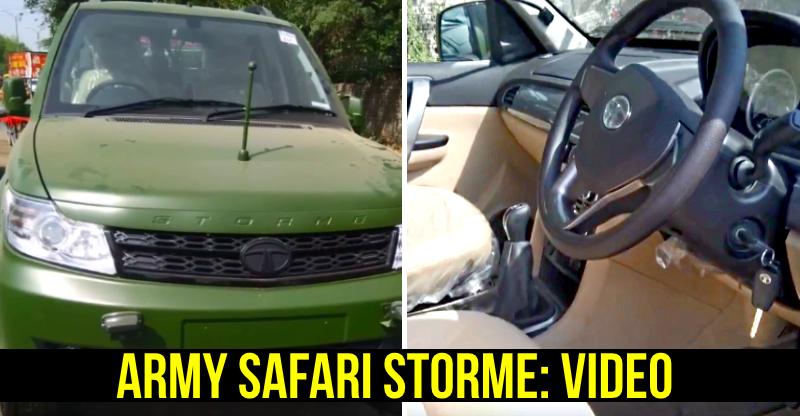Don’t Panic, The Army Is Not As Badly Off As It Is Projected
March 26, 2018; By: Nitin A Gokhale; 2
Email
For the first time since the Kargil conflict in 1999, the Indian Army’s ammunition stock, inventory of spares and maintenance of its existing crucial equipment is up to date, thanks to a combination of emergency procurement and revamped management system.
Although there are concerns about lower allotment for new acquisitions, the reality is far more reassuring, those who manage and maintain the readiness of the armed forces say. The MoD has already flagged the need for more funds in the coming years (and is hopeful of getting them as and when required) but it has also simultaneously began to
South Block (Image Courtesy: Wikimedia)
ensure bang for every buck it spends.
For nearly 12-13 years after Kargil, the management of ammunition and spares in the three forces was tardy and below par, resulting in accumulated shortages. The reality began to bite in the immediate aftermath of the Uri attack and the surgical strikes in Pakistan-Occupied Kashmir (PoK) in September 2016.
That’s why in late 2016, the Army signed 19 major contracts worth Rs 11,000 crore to replenish about 10 different types of ammunition. Deliveries in three of the bigger contracts have been completed and 13 others would complete the supply progressively by end of the current calendar year, defence sources have revealed. Similarly, the Indian Air Force and Indian Navy too bought ammunition and spares worth over Rs 10,000 crores to make up for years of neglect and indecision.
Additionally, over 75 contracts to buy and stock crucial spares for different equipment worth over Rs 15,000 crore (to be spent over the next four years) have been signed by the Army in 2017-18. These two measures alone have ensured that ammunition stock is up to date and almost 95 per cent of crucial equipment and platforms like Type A vehicles (armoured personnel carriers, army air defence platforms), all guns, UAVs and LORROS–Long-Range Reconnaissance and Observation System–and even general vehicles are on road that is they are serviced and ready for use whenever required. Earlier, at least 40 per cent of these platforms used to be ‘off-road.’
Similarly, a decision to establish two MRO (maintenance, repair and overhaul) hubs for the Army’s fleet of Advance Light Helicopters (ALH) at Mamun and Missamari has ensured that at least 65 to 70 per cent of the fleet is now available to fly any time against just about 30 to 35 per cent before 2015 because the helicopters had to be sent to Bangalore or the maintenance staff had to travel the long distance to the bases spread across Northern and Eastern Commands.
Lt Gen Nimbhorkar, MGO
This has been made possible, according to Lt Gen RR Nimborkar, the Army’s Master General Ordinance (MGO), because of improved coordination and synergy between the MoD and the Army’s decision-makers. The MGO – the man in-charge of ensuring all the in-service equipment held by the entire Indian Army is in top shape – speaking to
BharatShakti.in pointed out that for the first time in years, the entire annual budget of over Rs 15,000 crores that his branch handles has been spent even before the financial year has ended. “Thanks to clear directions of the Army Chief Gen Bipin Rawat and quick decision-making by the current defence secretary Mr Sanjay Mitra and his team, we have managed to retrieve the dire situation that we faced for over a decade. This has been made possible because of optimum use of resources and simplification of procedures”, Lt Gen Nimborkar said.
He pointed out to decentralization of financial powers and emphasis on sourcing more equipment and stores from indigenous sources, thanks to the decision made by former defence minister Manohar Parrikar and continued to be supported by the incumbent minister Nirmala Sitharaman, has resulted in improved efficiency.
Defence Minister Nirmala Sitharaman (Image Courtesy: PTI)
For example, earlier even a simple decision to buy light utility vehicles for the Army had to go to the MoD which meant the entire process used to take a minimum of two years. Now thanks to decentralization, service HQs are able to procure them in six months!
Similarly, the decision to source ‘non-core’ items from the local suppliers rather them buying them through the Ordnance Factory Board (OFB) as was done earlier, is resulting in massive saving. Over 80 items like berets, caps, socks, belts, sweaters, sports shoes etc. are now being directly bought from the market. Earlier, OFB used to source these items from the market and used to sell it to the forces at a higher price. For instance, the common combat uniform worn by all the troops was costing the organization four times the market cost! Today thanks to direct sourcing, best quality light rucksacks, knives, sports shoes, track suits and uniform, is being made available to the troops at a much lesser cost. The likely saving: Nearly 1200 crores a year!
Image Courtesy:
Storypedia.com
Digitization of records and inventory has now allowed the top leadership, including the Army Chief, Vice Chief and the MGO, to have a 360 degree view of equipment availability, the MGO said. “This allows us to reduce dead inventory. There have been instances in the past when we had bought spares worth tens of thousands of crores of rupees and didn’t use them. In some cases, these spares were not even opened and have now become dead stock since the equipment they were meant for have been retired from service,” Lt Gen Nimborkar revealed. Keeping these examples in view the current Army Chief has issued a directive to reduce unnecessary and excessive procurement. “We now follow a ‘just in time’ model of keeping spares which means only absolute minimum number of spares will be kept in stock,” the MGO revealed.
BM-30 Smerch Multiple Launch Rocket System (Image Courtesy:
Military-Today.com)
As mentioned earlier, the beginning of the turnaround dates back to end-September 2016. A thorough stock taking then revealed that some of the critical ammunition was down to less than a day’s stock and some others were dangerously low. For instance, Anti-tank ammunition called armour-piercing, fin-stabilised, discarding sabot (APFSDS) was completely out of stock, while ammunition for Smerch system and Konkurs missiles was down to two days of supply.
So teams were dispatched to friendly countries with authorization to sign contracts on the spot. Simultaneously, all the three vice chiefs were authorized to ensure that all ammunition and spares needed to fight ten days of intense war is always kept in stock. Called the 10i (ten days of intense war fighting) scheme, the three vice chiefs have made sure between September 2016 and now, all the procurement have been done to meet that requirement. From here on, all measures to build on the long term plan to equip the military for a 30-day war, will continue apace.
While the utilization of revenue budget has been exemplary over the past three-four years, the military is still faced with huge shortfall in its funds for capital or new acquisitions, as highlighted by the Parliamentary Standing Committee on Defence in its latest report. The government will have to find ways to augment the necessary budget if it wants to ensure that the military remains in top shape and ready for the twin challenges it faces from Pakistan and China.















